Bandages and dressings
Hydrophilic non-sterile bandages
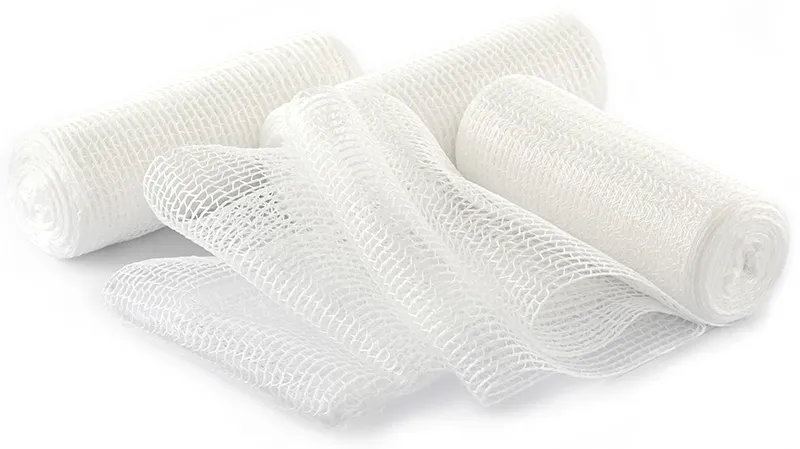
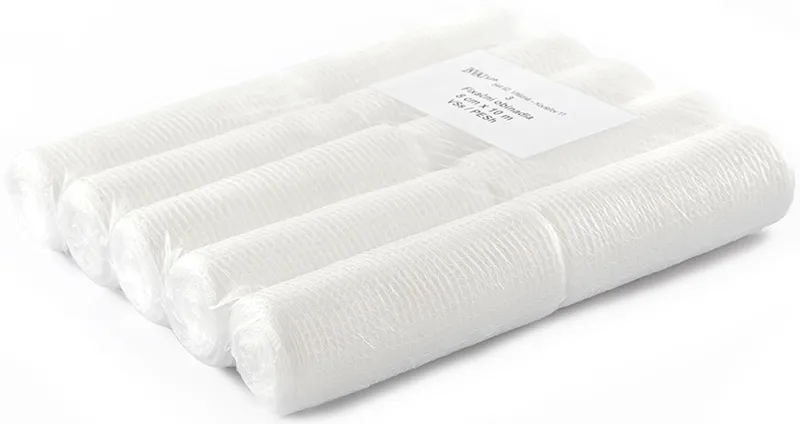
Indication
Knitted hydrophilic non-sterile bandages are intended mainly for fixation of injuries within first aid. They are produced from various materials, most frequently a blend of cotton and viscose, which imparts the bandage softness, absorbency, and air permeability.
Fixation bandages in the material combination of viscose yarn with textured polyester distinguish themselves with excellent absorbency, they are softer and gentler to the skin and their slight elasticity guarantees good adherence of the bandage and easy fixation of auxiliary treatment aids.
The bandages in small widths of 3 cm x 5 m and 4 cm x 5 m are ideal for fixing hands and fingers and for bandaging of lymphatic swelling. When bandaging hands and fingers, they do not need to be folded over and no bruising occurs.
Product features
- Hydrophilic, high absorbency
- Air permeability
- They do not fray
Material used
Highly absorbent 100% cotton
Cotton/viscose blend (the most common combination) 100% viscose
100% PES
Viscose/PES blend
Available dimensions
| Length (streched, m) | Width (cm) |
| 4 | 6 / 8 / 10 / 12 / 14 / 16 |
| 5 | 1 / 2 / 3 / 4 / 6 / 8 / 10 / 12 / 14 / 16 / 20 |
| 10 | 8 / 10 / 12 / 14 / 16 / 20 |
Different sizes according to customer‘s wish.
The bandages are used as tamponade bandages in widths of 1, 2, 3 and 4 cm
Packing
Bandages packed per 10 pieces (50 and 100 pieces in case of small widths) in PE bags are delivered in cardboard boxes of 45 x 45 x 45 cm.
Viscose/PES blend (the same dimensions and packaging for 100% viscose, 100% cotton and 100% PES)
| Width (cm) | Length (m) | Number of pieces in package | Number of pieces in a box |
| 6 | 4 | 10 | 900 |
| 8 | 4 | 10 | 650 |
| 10 | 4 | 10 | 600 |
| 12 | 4 | 10 | 500 |
| 14 | 4 | 10 | 400 |
| 16 | 4 | 10 | 400 |
| 1 | 5 | 100 | as required |
| 2 | 5 | 50 | as required |
| 3 | 5 | 50 | as required |
| 4 | 5 | 10 | as required |
| 6 | 5 | 10 | 900 |
| 8 | 5 | 10 | 650 |
| 10 | 5 | 10 | 600 |
| 12 | 5 | 10 | 500 |
| 14 | 5 | 10 | 400 |
| 16 | 5 | 10 | 400 |
| 20 | 5 | 10 | 350 |
| 8 | 10 | 10 | 370 |
| 10 | 10 | 10 | 300 |
| 12 | 10 | 10 | 250 |
| 14 | 10 | 10 | 200 |
| 16 | 10 | 10 | 180 |
| 20 | 10 | 10 | 160 |
Cotton/viscose blend
| Width (cm) | Length (m) | Number of pieces in package | Number of pieces in a box |
| 6 | 4 | 10 | 900 |
| 8 | 4 | 10 | 650 |
| 10 | 4 | 10 | 600 |
| 12 | 4 | 10 | 500 |
| 14 | 4 | 10 | 400 |
| 6 | 5 | 10 | 900 |
| 8 | 5 | 10 | 650 |
| 10 | 5 | 10 | 600 |
| 12 | 5 | 10 | 500 |
| 14 | 5 | 10 | 400 |
| 8 | 10 | 10 | 370 |
| 10 | 10 | 10 | 300 |
| 12 | 10 | 10 | 250 |
| 14 | 10 | 10 | 200 |
| 16 | 10 | 10 | 180 |
| 20 | 10 | 10 | 160 |
Device classification
Risk class I
Hydrophilic sterile bandages
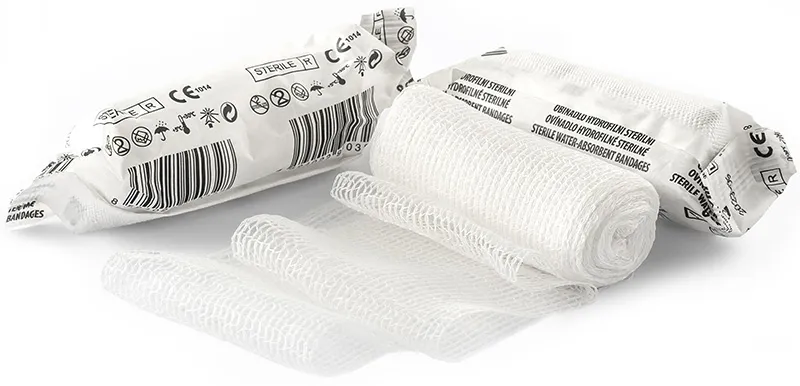
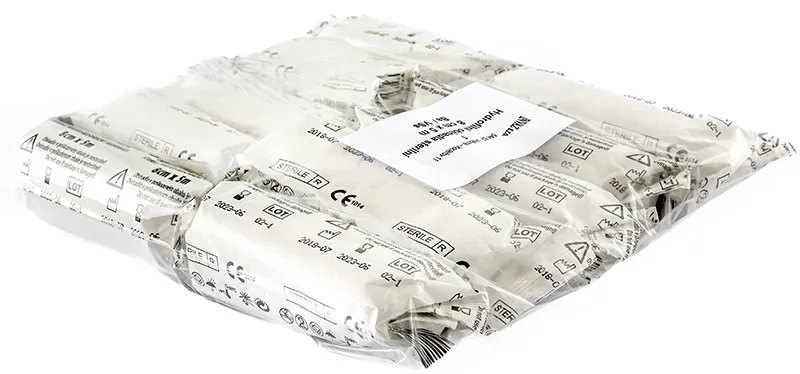
Indication
Knitted hydrophilic sterile bandages are intended for bandage of wounds that have already been covered with a compress or otherwise and thus they serve for fixation of these initial items. At the same time, they can also be used directly to cover wounds within first aid (especially when used at home).
Product features
- Hydrophilic, high absorbency
- Air permeability
- They do not fray
- They fix common dressing materials well
- They maintain sterility of the site of injury on a short-term basis
Material used
Highly absorbent 100% cotton
100% viscose
Cotton/viscose blend
Viscose/PES blend
Available dimensions
| Length (streched, m) | Width (cm) |
| 5 | 6 / 8 / 10 / 12 |
Packing
Individually packed bandages are delivered in cardboard boxes of 50 x 50 x 50 cm.
Cotton/viscose blend (the same dimensions and packaging for viscose/PES, 100% viscose and 100% cotton)
| Width (cm) | Length (m) | Number of pieces in package | Number of pieces ina box |
| 6 | 5 | 1 | 800 |
| 8 | 5 | 1 | 600 |
| 10 | 5 | 1 | 500 |
| 12 | 5 | 1 | 500 |
Device classification
Risk class Is
Non-sterile dressings
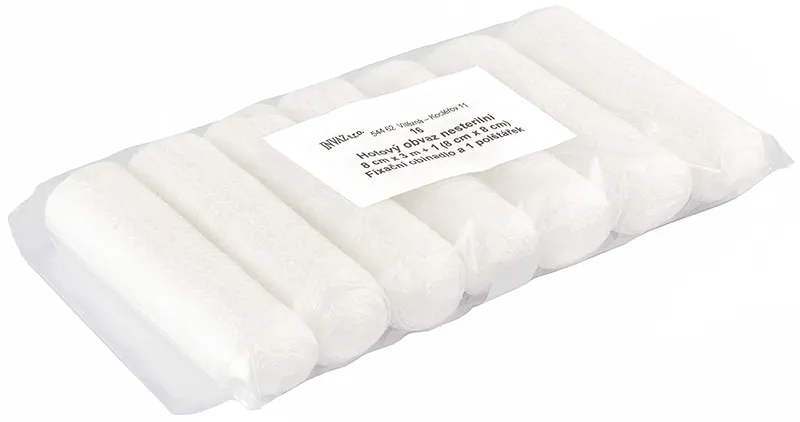
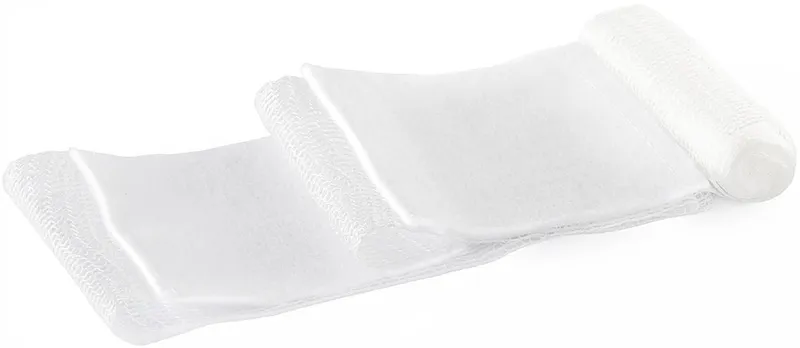
Indication
A non-sterile dressing is composed of two components – a fixation bandage and an absorbent pad, which allows to take up significant quantity of fluid, it covers the wound very well and creates a microclimate.
It is used for treating wounds within first aid after an injury and is suitable for using in first aid kits in cars. The dressing can be rolled or folded and is fitted with one or two pads.
Product features
- High absorbency
- It covers the wound very well
- It creates a microclimate
Material used
Fixation bandage is made of combination of viscose and polyester.
The pad is made of polyester nonwoven textile. The product can be fitted with various fixing clips or a Velcro fastener according to customer requirements.
Available dimensions
| Length (streched, m) | Width (cm) |
| 3 | 8 (one or two pads) |
| 4 | 8 (one or two pads) |
Packing
Individually packed dressings are delivered in cardboard boxes of 40 x 40 x 40 cm or according to customer‘s request.
Device classification
Risk class I
Sterile dressings
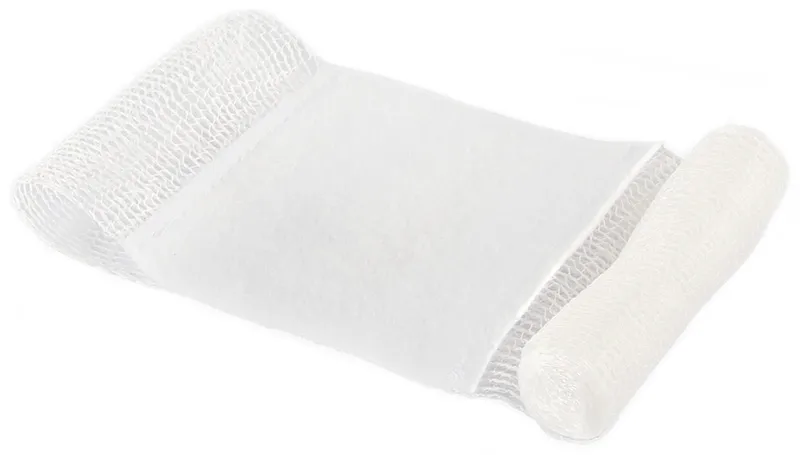
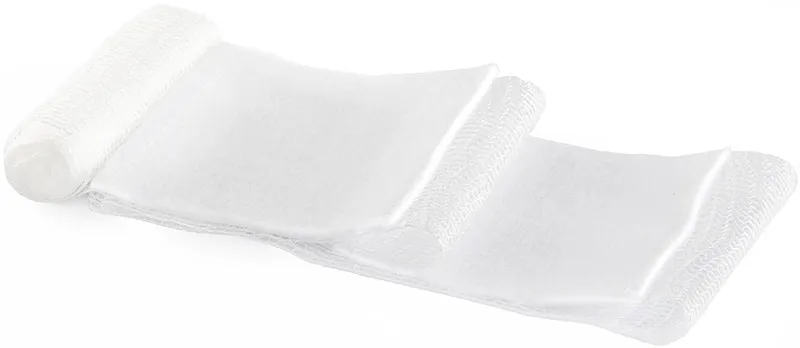
Indication
A sterile dressing is composed of two components – a fixation bandage and an absorbent pad, which allows to take up significant quantity of fluid, it covers the wound very well and creates a microclimate.
It is used as a top covering in dermatology, to cover wounds in surgery and to treat wounds within first aid after an injury. The dressing can be rolled or folded and is fitted with one or two pads of non-woven textile with a minimum absorbency greater than 800 g/m2 (but usually with absorbency of around 1,500 g/m2).
Product features
- High absorbency
- It covers the wound very well
- It creates microclimate
Material used
Fixation bandage is made of combination of viscose and polyester.
The pad is made of polyester non-woven textile. The product can be fitted with various fixing clips or a Velcro fastener according to customer requirements.
Available dimensions
| Length (streched, m) | Width (cm) |
| 3 | 8 (one or two pads 8 x 8 cm) |
Packing
Individually packed dressings are delivered in cardboard boxes of 45 x 45 x 45 cm.
Device classification
Risk class Is
